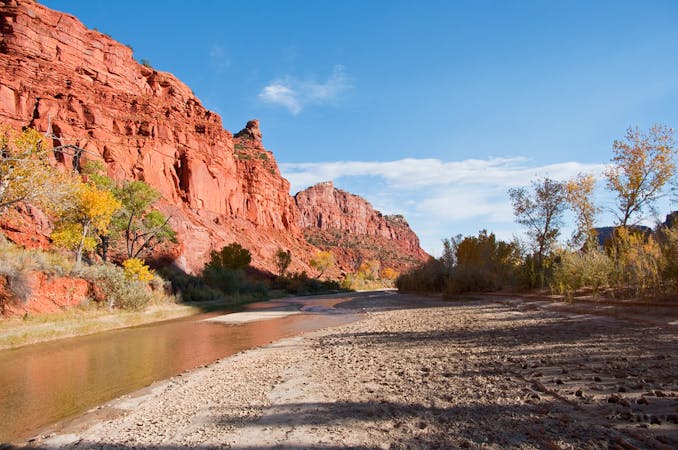
14 routes · Hiking

Journey through colorful canyons of all shapes and sizes, from the tight narrows of Round Valley Draw to the wide gorge of the Paria River.
Hiking Severe

Round Valley Draw is a supremely narrow slot canyon, one that's fairly popular as a day hike because of easy access from Cottonwood Canyon Road. Walk the spur road that leads to the trailhead, then follow the wash. Soon the bottom drops out into narrows. They begin moderately, but soon get very deep and dark, with the wavy walls barely shoulder-width apart in places. There are a few short scrambles, the most difficult being the initial one to enter the narrows. You may encounter stagnant pools in the upper reaches, but for the most part, this canyon and the next several miles are dry.
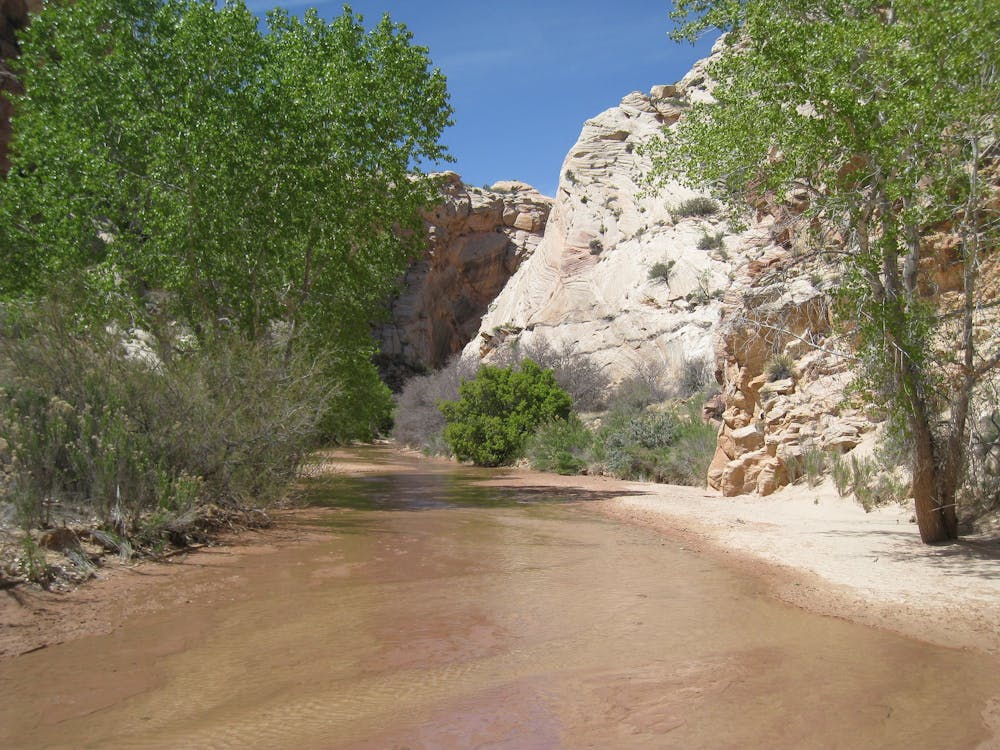
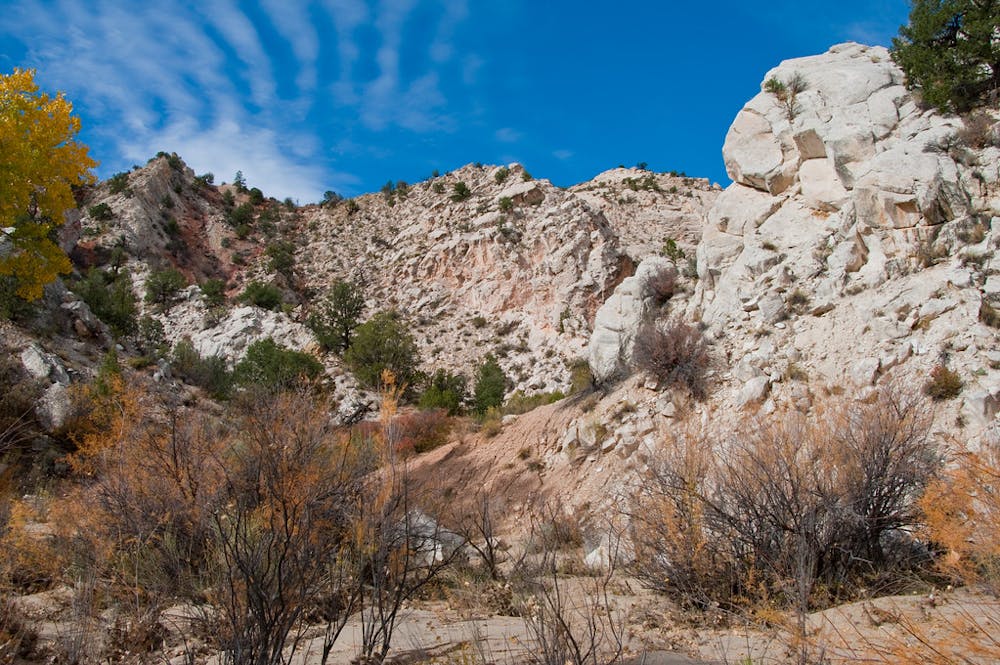
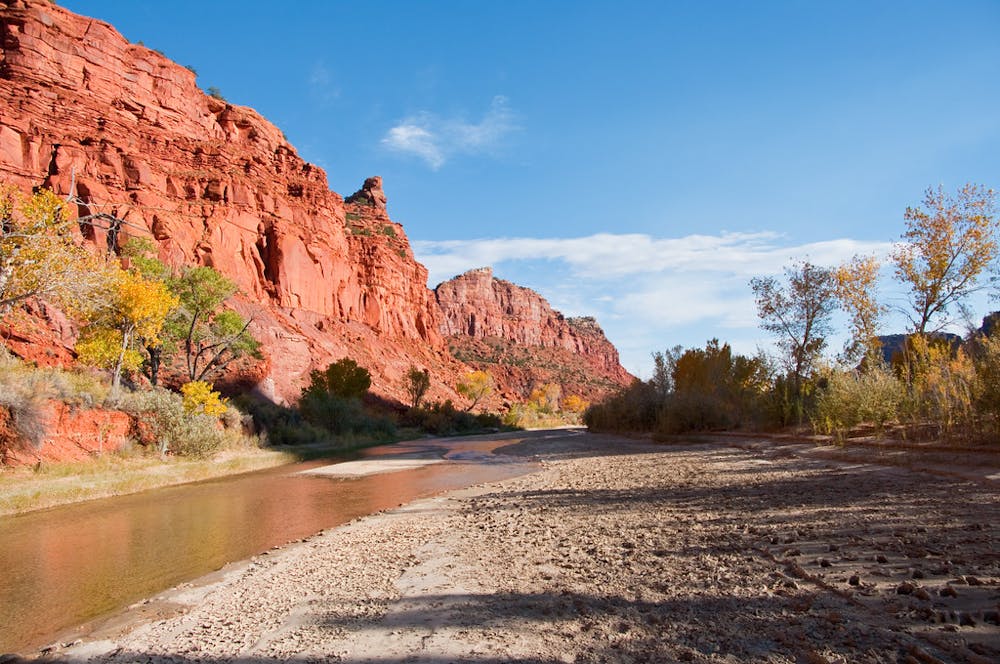
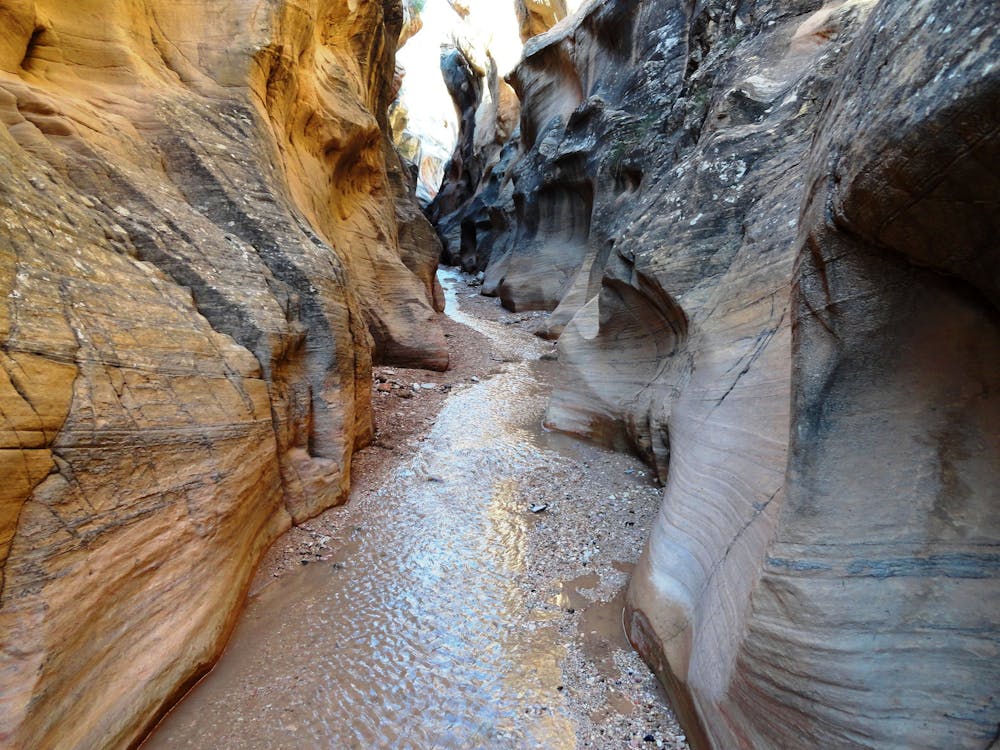
The corridor gradually widens as the walls grow taller, and Round Valley Draw joins Hackberry Canyon. This is a fairly wide canyon but quite scenic, with water-streaked white walls and occasional arch rock formations. The surface is mostly loose, dry sand. Eventually, water emerges and a trickle grows into a substantial flow, and the hiking becomes easier on consolidated substrate. Hackberry continues to grow wider and the scenery more dramatic as you go, with taller walls, rock towers, red mudstone slopes, and numerous side canyons that beg further exploration. A final section of narrows marks the exit into Cottonwood Canyon where the road lies.
The giant sandstone dome called Yellow Rock is nearby, and scrambling to its panoramic summit is a worthwhile detour. Next, continue along Cottonwood Creek to the confluence with the Paria River and head upstream through a narrow section that cuts through the Cockscomb. Beyond this, the canyon opens up to be quite wide and colorful, with red and pink bands in the surrounding slopes.
The Paria is meandering and braided, and the riverbed is the trail, so you’ll likely walk in and out of the water many times. The character of the canyon continues to transform in the miles upstream. Striped hills give way to ledgy red walls, then more finely sculpted cliffs with alcoves and buttresses, and finally, two-toned cliffs where red rock abruptly ends and white begins. Tributary canyons on both sides offer tantalizing detours. Some have narrow slots and some flow with clear water.
Throughout the Paria Valley and side canyons you can find traces of past inhabitants, like the Paria Townsite, now a ghost town, and the nearby Western film set location. Most remains of these have been erased by floods and fire, but you can find traces. Look closely in other spots and you might notice Native American rock art, or carvings by cowboys from more recent but also bygone days.
Eventually, you’ll reach the mouth of Willis Creek. Trace the flowing water up this ever-narrowing canyon as it necks down into a slot with tall, undulating walls. This canyon is popular with day hikers because it’s so close to Skutumpah Road. When the narrows end, you’ll emerge at the dirt road and reach the end of this section.
Sources: http://www.hayduketrail.org/TheRoute.html http://www.hayduketrail.org/Updates.html https://www.little-package.com/blog/2017/11/hayduke-trail-tips http://www.acrossutah.com/wordpress/round-valley-draw-and-hackberry-canyon/ http://www.acrossutah.com/wordpress/hike-guide-the-upper-paria/ https://caltopo.com/m/5J0S https://caltopo.com/m/HVQD
Severe
Hiking challenging trails where simple scrambling, with the occasional use of the hands, is a distinct possibility. The trails are often filled with all manner of obstacles both small and large, and the hills are very steep. Obstacles and challenges are often unexpected and can be unpredictable.

14 routes · Hiking